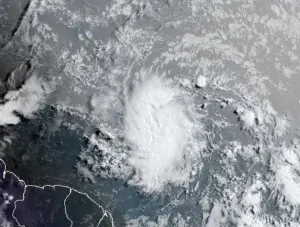
Iceberg twice the size of Toronto breaks off of Antarctic ice shelf
The new iceberg is 1,270 km² in area, and calved on the morning of February 26th.
A massive iceberg has broken off of Antarctica’s Brunt Ice Shelf, weeks after a new chasm opened up in the ice.
The new iceberg finally separated from the rest of the ice shelf on February 26th, according to the British Antarctic Survey (BAS), which says it is 1,270 km² in area – about twice the size of the City of Toronto.
The calving comes more than a decade after glaciologists based at the BAS’ nearby Halley Research Station began detecting several growing cracks in the 150-metre-thick ice shelf. The BAS says this latest calving became imminent when a new crack, known as the North Rift, appeared in November 2020.
By January, the rift was spreading as much as kilometre a day, and widened by “several hundred metres” in just a few hours on the morning of the 26th, completing the calving.

An aerial shot of the North Rift crack in the Brunt Ice Shelf. Credit: British Antarctic Survey/Andy Van Kints.
The Halley Research Station is automated and unstaffed during the winter months, and is not threatened by the latest calving. In 2016, the growth of nearby cracks prompted a decision to move the station 32 kilometres closer to land to avoid them.
“Our job now is to keep a close eye on the situation and assess any potential impact of the present calving on the remaining ice shelf,” Simon Garrod, the BAS’ director of operations, said in a statement. “We continuously review our contingency plans to ensure the safety of our staff, protect our research station, and maintain the delivery of the science we undertake at Halley.”
This latest calving is not related to the massive iceberg that broke off the Larsen C ice shelf in 2017.
That iceberg, formally named A-68, was about the size of Prince Edward Island, before breaking into two pieces. The larger, dubbed A68a, stayed mostly intact for more than two years before slowly beginning to disintegrate into smaller pieces over the course of a year. Though initially it was feared that it would ground itself on the ocean shelf off the island of South Georgia, devastating local wildlife, it deflected off the shelf in December and was carried south by the current.










